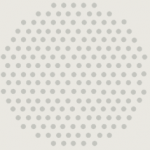Forehead lift ameliorates the horizontal forehead wrinkles, the position of the brows and the frown lines. It can be done with two different techniques. The classic forehead lift is performed through an incision extending from one ear to the other and hidden in the hair of the patient.
If the skin relaxation is excessive, then the incision should be placed at the hairline, in order to avoid transposing the hairline higher and thus in an unnatural position on the scalp. During the operation , the muscles causing the horizontal wrinkles and the frown lines are weakened.
The skin excess is removed and the brows are repositioned accordingly in a natural higher position. With the endoscopic technique, 5 small incisions are done in the hair of the patient. Through these the eyebrows are repositioned and the muscles causing the forehead wrinkles are weakened. No excess of skin can be addressed by this method.
Operation
It’s done under general anaesthesia and you stay in the hospital overnight. This operation is often combined with full face lift or blepharoplasty. After the open access operation you will have 2 drains that avoid fluid accumulation in the surgical area. They are usually removed after the first 24s. Stitches are removed on the 10th-12th day postoperatively.
Complications
The major complications of this procedure are edema and bruising that last about 2 weeks. Loss of some hair around the scar, infection of the wound, decreased sensitivity of the forehead skin and hematoma have been rarely reported (1%).
After the operation
You have to restrain from heavy exercise for at least 2 weeks. You can wash your hair after the 5th day but cannot dye them until after 4 weeks from the operation. The results of open access forehead lift are long lasting. There is no literature based proof for the same thing as concerns the endoscopic method.

